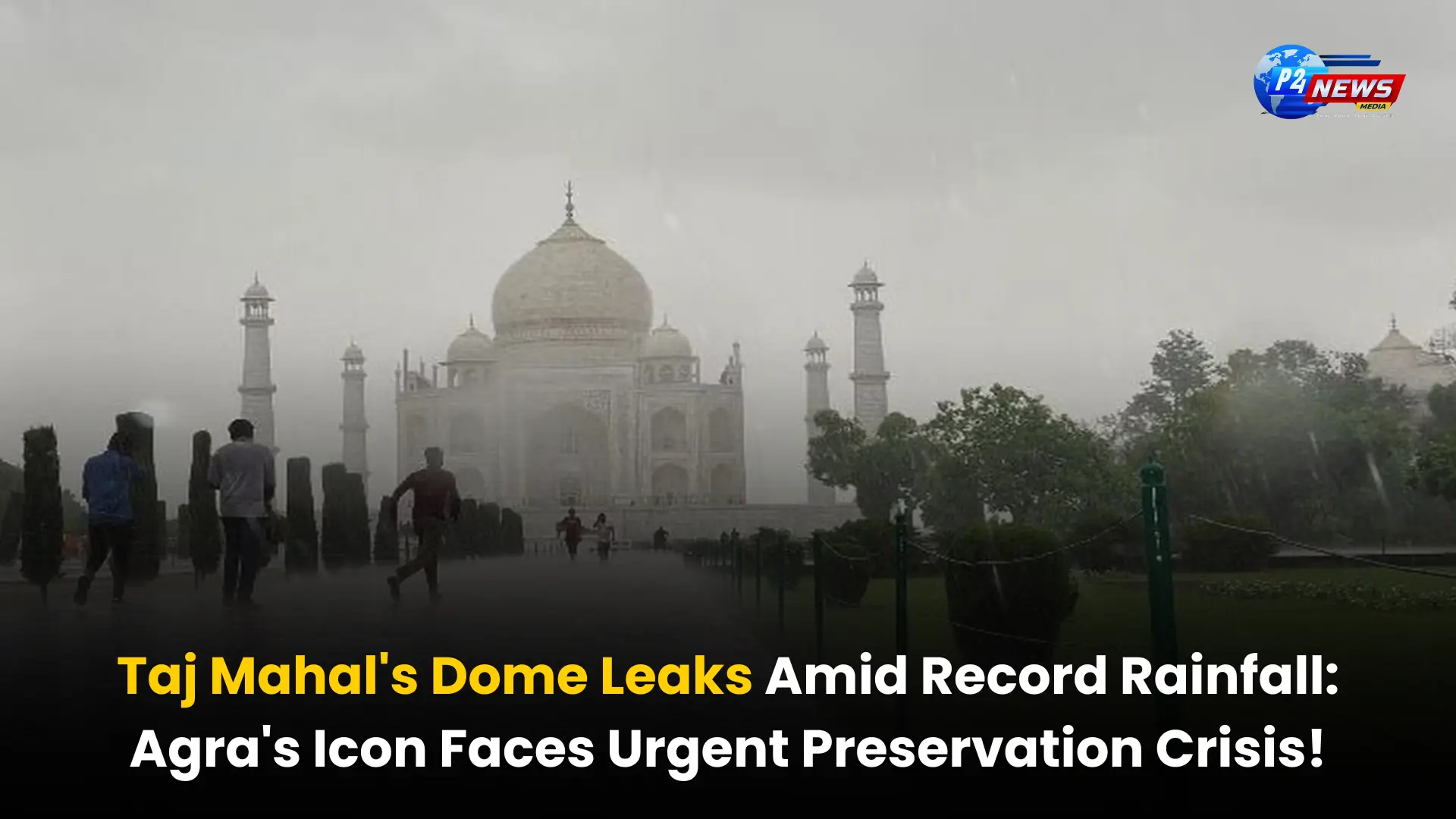Incessant rainfall over the past 48 hours has caused significant damage to Agra’s historical monuments, including the world-famous Taj Mahal.
Incessant rainfall over the past 48 hours has caused significant damage to Agra’s historical monuments, including the world-famous Taj Mahal.
Incessant rainfall over the past 48 hours has caused significant damage to Agra’s historical monuments, including the world-famous Taj Mahal. The continuous downpour led to water leakage from the main dome of the Taj Mahal, raising concerns about the structural integrity of the monument. The Archaeological Survey of India (ASI) has deployed its staff to investigate the issue, especially the water seepage and the flooding of nearby gardens, which have caused alarm among locals and tourists alike.
Superintending archaeologist Rajkumar Patel confirmed that an inquiry is underway to identify the exact source of the leakage. Preliminary assessments suggest that a possible hairline crack in the stones of the dome may be responsible for the seepage. “Moisture was observed inside the main mausoleum. We suspect a minor crack in the stones of the dome is allowing water to seep through. We are investigating whether the water leakage is happening from a consistent point or if it is intermittent. In either case, necessary repairs will be initiated once the rain stops,” Patel explained.
The inundation affected not only the structure but also the surrounding areas. A government-approved tourist guide, who requested anonymity, revealed that the garden near the central tank in front of the main mausoleum was submerged. The water leakage from the dome reportedly reached the chamber housing the tombs of the Mughal Emperor Shah Jahan and his wife, Mumtaz Mahal. This flooding of the tombs has sparked concern over the potential long-term impact on the monument's preservation.
A video purportedly showing the flooded garden area circulated widely on social media, drawing attention from locals and tourists visiting the UNESCO World Heritage Site. The footage evoked curiosity and concern about the structural vulnerability of the Taj Mahal, which attracts millions of visitors every year.
The meteorological department reported that Agra received 151 mm of rain on Thursday, marking the highest recorded rainfall in the region within 24 hours in the past eight decades. This excessive rainfall not only impacted the Taj Mahal but also caused "minor damage" to several other historical sites in and around Agra, including Agra Fort, Fatehpur Sikri, Jhunjhun Ka Katora, Rambagh, Mehtab Bagh, Chini Ka Rauza, Akbar's Tomb in Sikandra, and the Roman Catholic Cemetery.
The ASI has assured that immediate restoration work will be conducted once the rains cease. "The garden will be rejuvenated, and any necessary structural repairs will be carried out promptly to prevent further damage," added Patel. This incident highlights the vulnerability of India’s ancient monuments to extreme weather conditions, prompting discussions on the need for enhanced preservation measures to protect these cultural treasures.
The heavy rainfall, the highest in over eight decades, has exposed the fragility of Agra’s historical sites, underscoring the importance of constant monitoring and maintenance. The ASI's ongoing efforts will be crucial in ensuring that these iconic monuments are preserved for future generations to admire.
Like
Dislike
Love
Angry
Sad
Funny
Pray
'Trump Tracker: Tulsi Gabbard's Surprising Appointment as US Intelligence Chief
November 14, 20249th Ayurveda Day in Melbourne: A Celebration of Ayurvedic Innovations and Global Health Impact
November 10, 2024🍪 We Value Your Privacy and Experience Hi there! We use cookies to enhance your browsing experience, provide personalized content, and analyze site traffic. By continuing to use our site, you consent to our use of cookies.







Comments 0